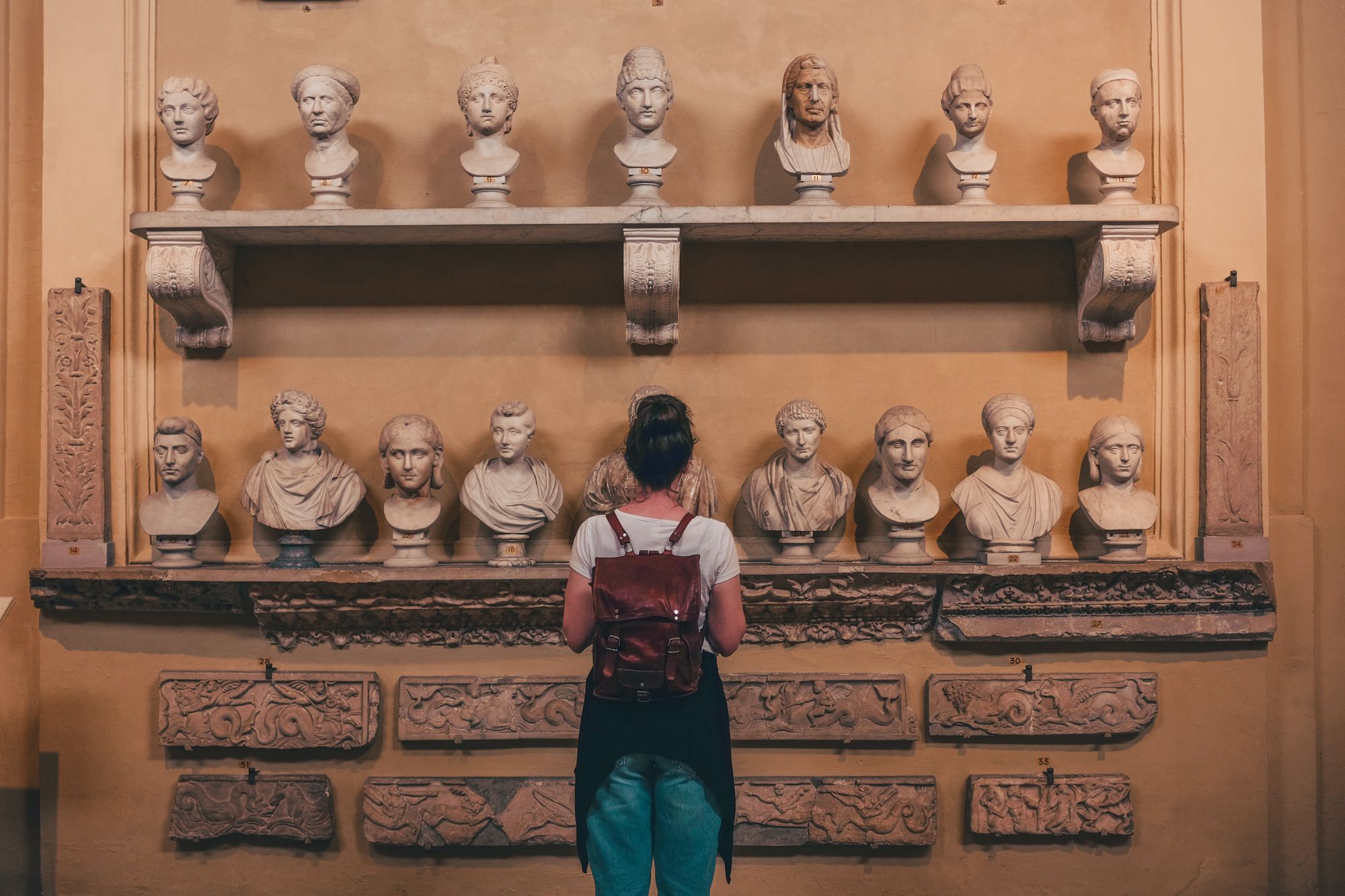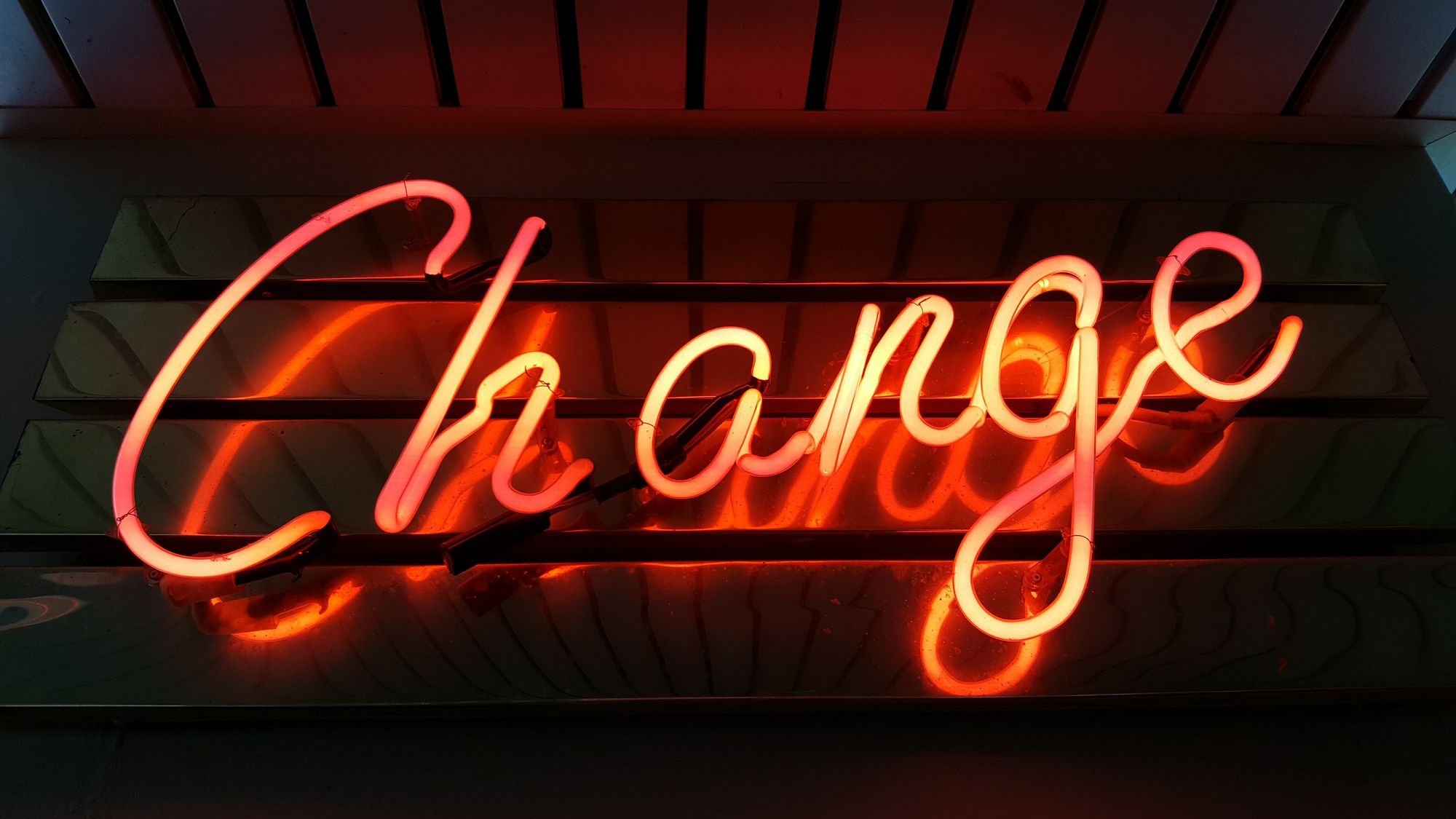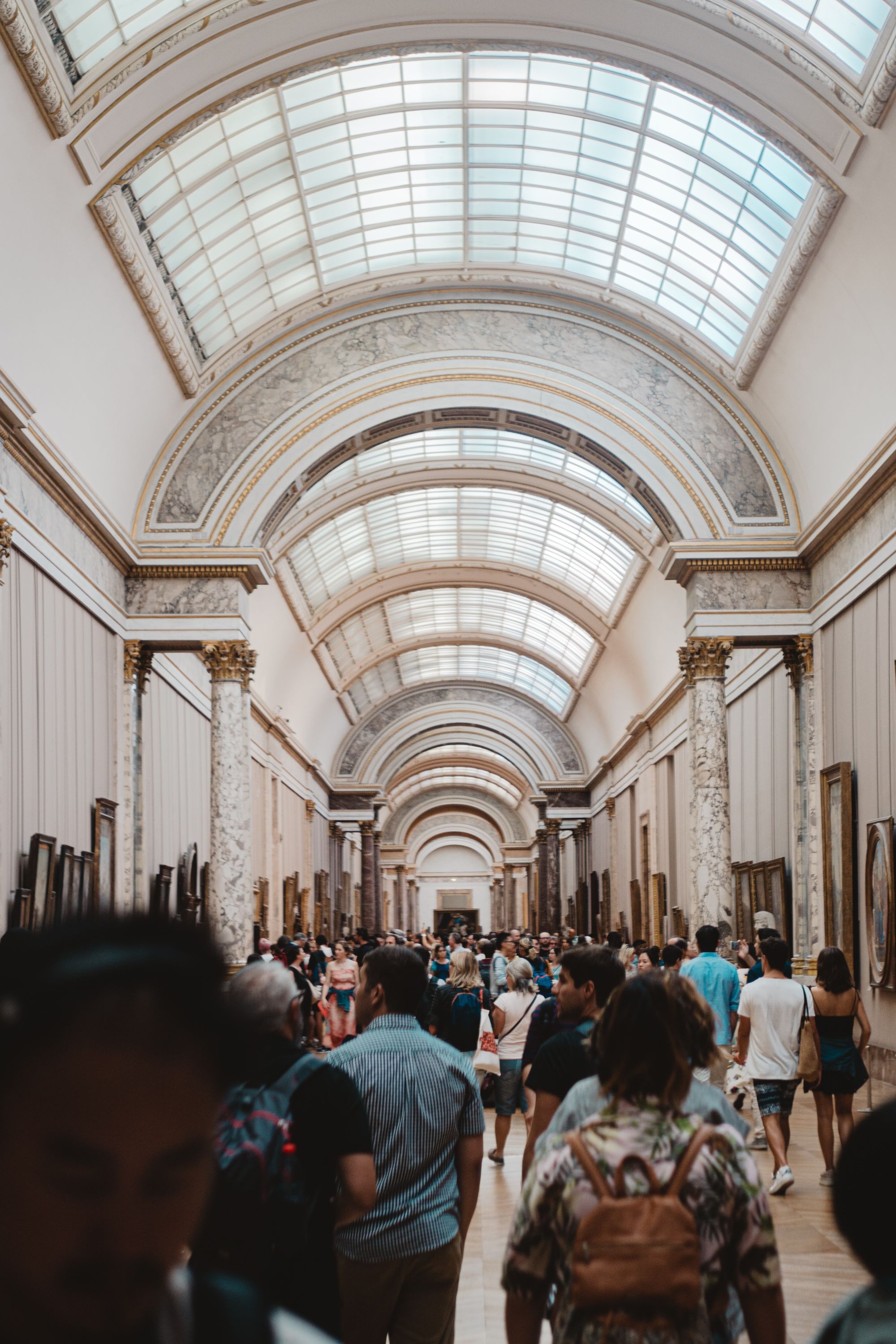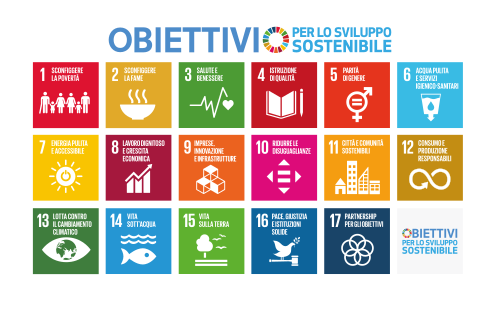WHAT WE MEAN WHEN WE ASK "IS CULTURE SUSTAINABLE?"
By Francesco Mannino

An authoritative look at the impacts of cultural heritage businesses
Since the end of January 2023, a short paper by Paolo Venturi and Andrea Baldazzini of AICCON (Associazione Italiana per la Promozione della Cultura della Cooperazione e del Non Profit) entitled ‘Imprenditorialità di impatto sociale e strumenti di co-progettazione per la valorizzazione del patrimonio culturale’ (Social Impact Entrepreneurship and Co-Design Tools for the promotion of Cultural Heritage) has been in circulation. The catchy title anticipates a further contribution by AICCON to an in-depth study on one of the topics that has perhaps been most debated in recent years in social innovation cultural circles: whether, and if so how, the cultural and creative sector contributes to generating social impacts, and of what kind. Public meetings and scientific contributions are full of models from other countries, batteries of indicators, SDGs, counterfactuals and theories of change, scrolling at relentless speed as if on a cinema screen in front of a sometimes fatigued audience of practitioners and decision-makers from the sector. In a nutshell it suggests that cultural activities and places can act as ‘stimulus goods’, instruments of social innovation capable of nourishing - through the distribution and socialisation of knowledge - paths of development and collective wellbeing, and common goods (Sacco, 2017), rather than translating into mere comfort goods, according to a typically extractive logic. This text has the merit of inviting all those who have their hands in the cultural and creative industries to reconsider their role as economic actors and seriously consider the possibility of becoming actors in a social shift that is necessary in an era of renewed and profound inequalities. Venturi and Baldazzini stimulate a reconsideration of the concept of sustainability of culture going far beyond the murky question of whether or not one can make a living from culture, suggesting instead that, with the help of the tools in its toolboxes, this sector can stimulate the ‘re-launch’ of entire regions by opening the doors to new entrepreneurial paths and offering different policy orientations. In this so-called ‘restart’ phase, one doesn’t so much need ‘comfort goods’ as one needs goods in general and knowledge capable of stimulating change.

Inequality and culture, taboo or elimination?
From the contributions of these two scholars emerges a high level of confidence in a more inclusive and sustainable capitalism, a confidence perhaps generated by case studies that demonstrate its feasibility. From those, however, who experience that sector on a daily basis and observe its movements, trends, policies and storytelling, the impression emerges that the cultural heritage sector is still firmly caught between the rhetoric that states its beauty will save the world and the aggressive drive to make it Italy’s oil. These two pillars inevitably produce political choices and practicable conditions that, to date, seem far from being able to generate properly sustainable processes and impacts that challenge deep social imbalances. Indeed, the cultural sector is, to date, also a place of inequalities and this topic seems largely taboo among operators, workers, and public and private decision-makers. An attempt will be made here to take a look at inequalities in the cultural world and how they seriously affect theories of social and economic sustainability in the sector as well as, of course, the lives of many people. Nevertheless, in closing, an attempt will be made to pick up the thread of Venturi, Baldazzini and others, trying to corroborate some generative hypotheses.
The weight of historic and artistic heritage in the cultural and creative production system
It is precisely the ‘Io sono cultura’ (I am culture) report by the Symbola Foundation that highlights trends for the 2019-2021 three-year period, and is referred to in the paper, that is worth examining here. Trends that, it must be said, have found little space in the debate among staff and insiders and, even less, among old and new public decision-makers. Looking at the businesses operating in the ‘historical and artistic heritage’ sector, they add value to the tune of 3% of the cultural and creative industries and 0.2% of the Italian economy as a whole. The sector’s 51,000 employees also account for 0.2% of the country’s total employment figures. Staying on the topic of employment, we should first of all highlight the heavy drop of -14.6% of jobs in the sector (about 7,500 people) in the 2019-2021 three-year period, of which about a third in the two-year period 2020-2021 alone. Also, on the issue of the vitality of these businesses, the news is not good. During the 2020-2021 twoyear period, the rate of new businesses registering with a chamber of commerce fell by -23% and business closures increased by +72.2%. In short, fewer new companies, a large number of closures and almost 15% of jobs lost in three years (compared to a general decline of -1.5% jobs throughout the country) show the obvious fragility of the historical and artistic heritage sector. People will say that there are also those companies that have not closed down and those jobs maintained. True, for them perhaps there is room in the field of economic sustainability. But what about all the others?
Is the market for leisure activities around cultural heritage sustainable?
As is widely known, the 2004 Cultural Heritage Code had introduced the indirect management of ways of enhancing services aimed at the public. Almost two decades later, the hoped-for debate on the outcomes of those regulatory choices is struggling to take off, crushed by the public vernacular on culture as oil and a rich food for all, but, one fact is quite clear, the private individuals who have been called upon to take on those activities through public concessions have had to (or wanted to) consider the issue of economic sustainability as a priority. If a cultural company has to guarantee dividends to its shareholders that allow for a return on investment, it will obviously choose to focus on where there is the most possible revenue. In this way, any work to add value takes on a predominantly economic and selective meaning. On some public occasions (for example during the MIBACT “Italia Europa. Le Nuove Sfide per l’Educazione al Patrimonio Culturale” conference in Rome in 2019), consultants from CONSIP, the agency that manages state tenders for acquiring services or products (including cultural ones), explicitly stated that cultural businesses that manage services for the public under Art. 117 of the Cultural Heritage Code only break even between costs and benefits when the threshold of 200-250,000 paying visitors per year is exceeded. It is easy to imagine that, in the light of such a parameter, only some of the cultural assets in our region are attractive for such investments, leaving aside all the rest. For example, among the 2,395 museums that require forms of paid access (ISTAT 2021), only about 50 are above that threshold. This logic of outsourcing cultural services based on economic sustainability alone leads the sector to an approach that is typical of our present situation, which is characterised by policies and strategies that seem to see only the “centre” of the whole. Both “major” cultural heritage sites or “great attractions” and “historical centres” or “high” cultural forms blur to the point of exclusion and condemn to irrelevance everything that is outside those “centres”, namely “minor” cultural heritage assets, the so-called fringes, any cultural form that is “other”. In short, they inevitably lead to extractive capitalism practices of the kind so stigmatised by Venturi and Baldazzini. People will say that those companies that oversee the major attractions (those with over 250,000 visitors a year), businesses that, for example, manage services for the 50 or so most attractive museums, generate economic value and jobs. True, there is perhaps room for them in the field of economic sustainability. But what about all the others?

Is cultural work sustainable?
Returning to the question of work and going into more detail about the quality of work of those operating in the sector, some alarming elements emerge. According to data from the “Cultura, contratti e condizioni di lavoro” (Culture, contracts and working conditions) survey carried out by the ‘Mi Riconosci?” Charity/NGO and that closed on 9 January 2023 with 2,526 answers to a questionnaire, 68.7% of the sample said it was employed. Of these, 30.21% work in museums, 16.2% in libraries and 21.88% in a public institution. Only 42% have a permanent contract, while 26.5% are on a fixed-term contract. The rest are divided between internships, traineeships, Co.co.co. (a type of freelance contract), seasonal work, apprenticeships, temporary positions, on-call and project work, and moonlighting. Only 6.1% are hired under the only proper contract for the sector, the Federculture CCNL. 23.5% are employed in the services sector, 3.3% with trust services providers, 12% in the commercial sector, 2.5% in construction, and so on. 68.9% earn less than €8 net an hour. 50.4% earn less than €10,000 a year. 72.3% earn less than €15,000. Of the non-employees, 61% work with a VAT number and 29% use a withholding tax (according to re-elaborated data from Il Manifesto). Although the sample is limited and relies on the answers of volunteers from a group of people sensitive to the positions of Mi Riconosci? who self-administered the questionnaire, the initiative remains absolutely praiseworthy given the lack of wide-ranging studies on the forms of collective contractualisation of those employed in the cultural heritage sector. If the data were to be confirmed, almost half of those in cultural employment would be classified as ‘precarious’ (fixed-term and self-employed), and of the remaining segment only an insignificant component would get a a CCNL (Federculture) contract that recognises the peculiarities of the profession in question. It remains to be understood what gender inequalities, if any, characterise this already fragile employment sector. And it is to be hoped that research and studies will soon be able to go deeper into this topic than the non-profit. People will say that there are workers who are stable and have decent wages. True, for them perhaps there is room in the field of economic and social sustainability. But what about all the others?
Is access to culture sustainable?
Moving on to the issue of so-called demand, or audiences, inequalities are also evident on the cultural participation front, and even in this aspect one struggles to find a sober, secular and in-depth discussion that investigates the causes, except with rare and excellent exceptions. ISTAT and its BES (Benessere Equo e Sostenibile - Fair and Sustainable Welfare) Report reminds us that full cultural participation outside the home in 2021 is something that at this point implicates only 8.5 per cent of citizens living in conditions of economic well-being. This drops to 5 per cent for single-income families (ISTAT 2016) and almost disappears (1.7%, ISTAT 2022) among people living in absolute poverty, namely, 1.960,000 families, 7.5% of the total population. The regional gaps are evident: if in 2019 the full participation figure was 28.2% at national level, this jumped to 32% in the north and plummeted to 21% in the south, with lows of up to 17% in Sicily and Calabria (ISTAT 2021, dashboard). In its annual report on educational poverty Save The Children tells of cultural exclusion among minors in regions such as Sicily that reaches non-participation levels of 73% when it comes to the theatre, 71% for museums, 69% for concerts, 80% for archaeological sites (in a region dense with UNESCO heritage sites...). Here the phenomenon of educational poverty is one of the snapshots that better than all others allows us to look at the different aspects of inequalities in cultural participation; a cross-sectional snapshot that, intersecting with territorial aspects, economic and social conditions, gender and generational aspects, fully condenses what happens when the conditions of access to culture are not sustainable, democratic or part of an inclusive social system. People will say that there are also those who participate fully in culture. True, for them perhaps there is room in the field of social sustainability. But what about all the others?
What can be done to make culture sustainable?
If it excludes a large part of the population from participation; if it harbours working conditions that tend towards the precarious and underpaid; if it forces many businesses into fragile conditions, then the historical and artistic heritage sector in the Italian cultural and creative production system would seem incapable of responding widely to the canons of economic and social sustainability. Except in a few virtuous and famous cases, but perhaps not to be taken as a model precisely because they are more exceptional than ordinary. In the face of this data and this way of thinking, the assertion that ‘we could live on beauty alone’ translates into wishful thinking, an illusory desire, a utopian rhetoric. And yet.
And yet if new cultural postures capable of restoring consequential justice to those hopes and rhetoric were to be assumed, giving weight above all to certain authoritative voices of equally authoritative scholars and scholars and by now consolidated national and transnational guidelines, the cultural sector, and in particular the historical and artistic heritage sector, could truly contribute to that integrated sustainability, the supreme objective of the 2030 Agenda for Sustainable Development. An Agenda that countries, companies and citizens have now made intrinsically their own, setting out to generate significant social impacts also in terms of quality of work, life and well-being. The SDGs (Sustainable Development Goals) of Agenda 2030 have now been widely adopted as a way to bring about the necessary change of course from the unsustainable trajectory imprinted on our planet and social relations, and this within an acceptable timeframe.

A change of course to which this sector could contribute if sustainable objectives were finally adopted. Objectives such as quality cultural employment; adequate levels of public financing of culture; widespread cultural and artistic education and training, decent levels of guaranteed access to, and participation in, culture; the recognition of active participation in cultural processes as an indispensable phenomenon for the democratic, inclusive and equitable development of our societies. Just another illusory and utopian wish list? Far from it, as Valentina Montalto reminds us in her “Culture per lo sviluppo sostenibile: misurare l’immisurabile?” (Culture for Sustainable Development: Measuring the Unmeasurable?), the ones mentioned are just a few of the 22 indicators UNESCO has extracted from the 2030 Agenda and its SDGs to make them applicable to the cultural sector, so that it can unequivocally contribute to the great and indispensable goal of sustainable development.
Borrowing Venturi and Baldazzini’s thinking and projecting it elsewhere, the heritage segment could contribute to generating sustainable social impacts if countries like Italy would recognise cultural work as a profession that contributes to the general interest and to producing social change, on a par with the educational or care professions. If it’s a source of stimuli in this direction, this should happen within a public welfare framework, as is done for schooling or health, by establishing a National Cultural System aimed at ensuring that “every citizen has the right to culture, that culture serves to create awareness and forge democracy, and that the very existence of cultural spaces should have as ultimate goal that of creating social inclusion and widespread well-being”. So write the activists of Mi Riconosci?, who have made this political proposal public in a book called “Beyond Great Beauty”. A national system that can therefore draw on a large number of cultural professionals to strengthen the generative range of processes of learning and knowledge, care and well-being.
Going beyond adding value
If, beyond the high-faluting rhetoric that fills TV studios, conferences and political programmes, the social value of the cultural sector is truly recognised, it will have to be definitively removed from its exclusive dependence on the market performance of cultural services. This is the point, beyond any provocation or long-term proposal. If we really want to place the cultural heritage sector in a sustainable development framework that generates longterm impacts, we will have to definitively and unequivocally recognise that the Italian concept of adding value, which became the norm for the State at the turn of our two centuries, has failed to coexist with that of integrated, social, economic and even environmental sustainability (what cultural tourism really generates at this level is already the subject of reflection and research, especially in the great cities of art and the major attractions). A concept abused by extractive capitalism, which blissfully does not care about the long-term, but rather exhausts ‘cultural deposits’ as they come in demand within a system of hectic market dynamics. To be generative of impacts on people and social relations, cultural heritage must become a common good, it must be accessible, equitable, a place of well-being and activation (as well activism) for those who work with it and those who participate in it. More than valued, therefore, cultural heritage should be socialised, in the sense that it should be taken, precisely, as a key to social transformation and participation not only because it is a knowledge store to draw on (a collection of cultural things) but as an aggregate of processes of stimuli and emancipation from intermediation, isolation, subordination and poverty. The ideas are there.
Now we just need the policies.

Francesco Mannino, PhD in urban history, works in Catania for Officine Culturali, a social enterprise association of which he is co-founder, president, and project manager. With this group he works on the sustainable expansion of cultural participation. Mannino has been a member of the Federculture board since 2018 and was elected coordinator for Sicily of ICOM Italy in 2020. He is a consultant for Compagnia di San Paolo and Fondazione Edison Orizzonte Sociale for the realization of cultural-based projects to fight inequalities (educational and relational poverty).
